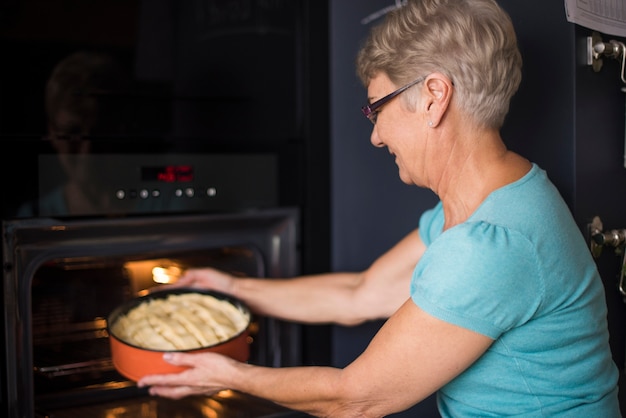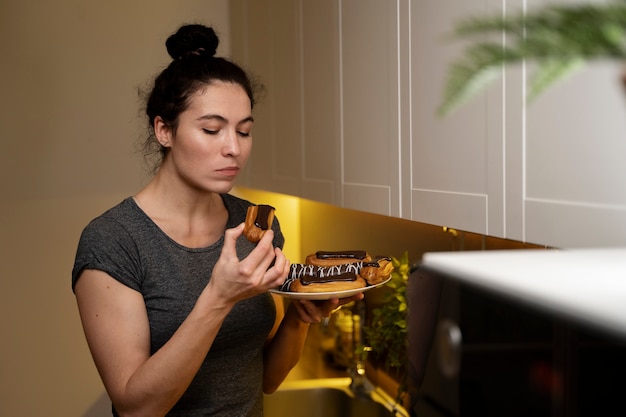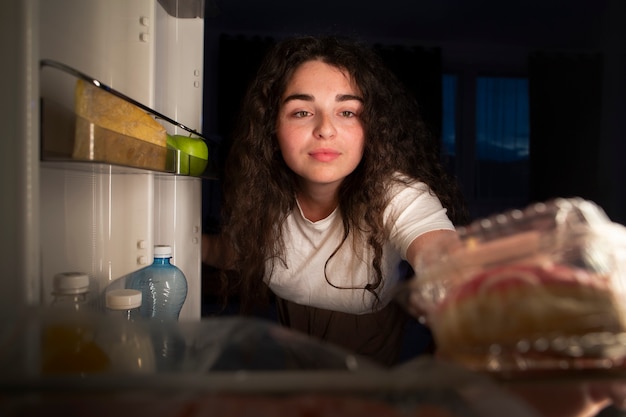Let's be honest, we've all been there. Staring at a pot of rice on the stove, praying for it to reach that perfect fluffy texture, only to end up with a mushy mess or, even worse, a dry, crunchy disaster. But fear not, my fellow rice enthusiasts, for I'm here to reveal the secrets to mastering the art of cooking perfect rice in the microwave! No fancy rice cooker needed, just a few simple tips and tricks.
Over the years, I've experimented with countless microwave rice recipes and methods, and I've finally discovered the magic formula for consistently achieving that delicious, fluffy rice that makes every meal a delight. So, grab your favorite bowl, a trusty microwave, and let's embark on a journey to microwave rice mastery together.
(Part 1) The Rice Selection: A culinary journey Begins

Firstly, it all starts with choosing the right rice. Just like a painter selects their canvas, we need to choose the perfect rice variety for our microwave culinary masterpiece. While long-grain white rice is often considered the king of microwave cooking, don't be afraid to venture beyond the ordinary.
A Rice Variety for Every Occasion:
- Long-grain white rice: This is your classic go-to for a good reason. It cooks up quickly and consistently, resulting in separate, fluffy grains that are perfect for stir-fries, curries, or even just a simple side dish.
- brown rice: While brown rice takes longer to cook than its white counterpart, it offers a healthier option with a nutty flavor and a slightly chewier texture. You can definitely cook it in the microwave, but be prepared to adjust the cooking time.
- jasmine rice: This fragrant rice is renowned for its soft and slightly sticky texture, making it a delightful choice for Asian-inspired dishes. However, if you're after fluffy, separate grains, it might not be your best bet.
- basmati rice: This long-grain rice is known for its delicate, floral aroma and its ability to cook up light and fluffy. It's a popular choice for Indian dishes and rice pilafs.
Don't be afraid to experiment with different rice varieties. You might discover a hidden gem that perfectly suits your taste and culinary preferences. Just remember to adjust the cooking time accordingly based on the rice type.
(Part 2) The Water to rice ratio: A Crucial Balance

Now, let's talk about the foundation of any good rice dish: the water-to-rice ratio. Getting this right is paramount to avoiding a soggy, mushy disaster or a dry, crunchy disappointment. The ideal ratio is generally 1:1 (one cup of rice to one cup of water), but don't be afraid to adjust it based on your specific microwave and rice variety.
Finding the Perfect Ratio for Your Microwave:
The perfect ratio for your microwave might differ slightly from the general 1:1 rule. Your microwave's power level, the type of rice, and even the size of your bowl can affect the amount of water needed. Don't be afraid to experiment. Start with the 1:1 ratio, and then adjust accordingly based on the results. You're aiming for a slightly mushy texture that will fluff up beautifully after cooking.
Tips for Achieving the Perfect Ratio:
- Check the rice packaging: The packaging of your chosen rice may provide specific water-to-rice ratios, so always check those instructions for the best results.
- Start with a little less water: It's better to start with slightly less water and add a little more if needed. This way, you can avoid over-cooking and creating a mushy mess.
- Observe the rice: As the rice cooks, keep an eye on the level of water. If it seems like there's too much water left, you can try draining some of it off. If it seems too dry, add a splash of water and continue cooking.
Remember, a little experimentation is key to achieving that perfect rice texture. Don't be discouraged if your first attempt isn't perfect. We all have to start somewhere, and with a little practice, you'll become a microwave rice master in no time.
(Part 3) The Microwave Power Setting: Unveiling the Power of Your Appliance

Let's get technical for a moment, because understanding your microwave's power setting is crucial to unlocking the secrets of perfect microwave rice. The power setting of your microwave will significantly impact the cooking time. A higher wattage microwave will cook your rice much faster than a lower wattage one.
Adjusting Cooking Time for Different Power Levels:
Most microwaves have multiple power settings, ranging from low to high. If you're unsure about your microwave's power level, consult the manual. Here's a general guide for adjusting cooking time based on power settings:
| Microwave Power Setting | Cooking Time Adjustment |
|---|---|
| High (800-1000 Watts) | No adjustment needed |
| Medium (500-700 Watts) | Add 1-2 minutes to the cooking time |
| Low (300-500 Watts) | Add 3-4 minutes to the cooking time |
Remember, these are just general guidelines. It's always best to check your microwave's power level and the instructions on your rice packaging to find the most accurate cooking time for your specific microwave and rice type.
(Part 4) The Microwave Rice Cooker: A Culinary Game-Changer
Now, let's talk about a game-changer in the world of microwave rice cooking: the microwave rice cooker. These handy little gadgets are specifically designed for microwave use, and they make cooking rice a breeze. They often come with built-in measuring cups for rice and water, making it a truly convenient option.
Microwave Rice Cookers: A Convenient and Efficient Solution:
Microwave rice cookers are available in a variety of styles and sizes, with many featuring different settings for various rice types. They typically have a lid that helps to trap steam, ensuring even cooking. Using a microwave rice cooker is as simple as adding your rice, water, and pressing start.
If you cook rice frequently, a microwave rice cooker can be a great investment, saving you time and effort. However, if you're looking for a more budget-friendly option, a simple bowl and some plastic wrap can achieve just as impressive results.
(Part 5) The Simple Bowl Method: A No-Frills Approach
Don't fret if you don't own a fancy microwave rice cooker, you can still achieve delicious results using a simple bowl. Just make sure it's microwave-safe! The key is to cover the bowl securely with plastic wrap, leaving a small vent for steam to escape. This helps to create a steaming environment that ensures even cooking.
Simple Bowl Method for Microwave Rice:
1. Choose your bowl: Select a microwave-safe bowl that's large enough to comfortably hold your rice and water.2. Measure rice and water: Use the 1:1 ratio (or adjust according to the rice packaging instructions) for your chosen rice. 3. Cover with plastic wrap: Cover the bowl with plastic wrap, leaving a small vent to allow steam to escape.4. Microwave: Cook the rice according to the suggested cooking time for your rice and microwave power level.5. Rest: Let the rice rest for 5-10 minutes, covered with the plastic wrap, to allow the steam to distribute evenly. 6. Fluff: Use a fork or rice paddle to fluff up the rice after it's rested.This simple bowl method is surprisingly effective. Just remember to keep a watchful eye on your rice as it cooks, ensuring it doesn't become overcooked or dry.
(Part 6) The Cooking Time Guidelines: A Journey to Flavor
Finally, we arrive at the heart of the matter: the cooking time. Remember, every microwave is different, and the type of rice you choose will impact the cooking time. These guidelines are a good starting point, but always adjust based on your microwave power and the specific rice variety.
General Cooking Times for Long-Grain White Rice:
- 1 cup of rice: 4-5 minutes on high power
- 2 cups of rice: 6-7 minutes on high power
- 3 cups of rice: 8-9 minutes on high power
It's best to check your rice packaging for more specific cooking time recommendations based on the type of rice you're using.
Monitoring the Cooking Process:
During the cooking process, keep a close eye on your rice. If you see that the rice is still quite watery, give it an extra minute or two. If it seems dry and undercooked, you might want to add a splash of water and cook for another minute or two. Remember, you're aiming for a fluffy, slightly mushy texture that will absorb any excess moisture during the resting period.
(Part 7) The Resting Period: A Crucial Step for Perfect Texture
Once your rice is cooked, don't rush to uncover it. Letting the rice rest for a few minutes is a crucial step in achieving that perfect fluffy texture. During the resting period, the steam will distribute evenly and the rice will absorb any remaining moisture, creating that beautiful, light texture we all crave.
The Art of Letting Rice Rest:
After cooking, leave the rice in the microwave, covered with the plastic wrap, for 5-10 minutes. Resist the temptation to open the bowl too soon. This crucial resting period will allow the rice to fully cook through and absorb any excess moisture, ensuring a consistently perfect texture.
(Part 8) The Fluffing Technique: Unveiling the Fluffiness
The final step in achieving perfect microwave rice is fluffing. This simple step helps separate the grains and create that airy, fluffy texture that elevates your rice dish to new heights.
Fluffing for Perfect Rice:
After the rice has rested, gently use a fork or a rice paddle to fluff it up. This simple step helps to separate the grains, creating that light and airy texture that's so delightful. Avoid over-fluffing, as this can break the rice grains and create a crumbly texture.
(Part 9) The Lemon Juice Trick: A Taste of Refreshment
Now, let's talk about a little secret weapon that will elevate your microwave rice game: a splash of lemon juice. It might sound unusual, but adding a teaspoon or two of lemon juice to your rice and water before cooking can work wonders.
The Power of Lemon Juice:
Lemon juice serves a dual purpose: it helps prevent the rice from sticking to the bottom of the bowl, and it adds a subtle, refreshing flavor that complements a variety of dishes. This simple trick is a game changer for those who find their rice sticking to the bottom of the bowl.
(Part 10) The "Don't" List for Microwave Rice Perfection
Now that we've covered the dos of microwave rice cooking, let's address the don'ts. There are a few common mistakes to avoid that can lead to disastrous results.
Common Mistakes to Avoid:
- Don't overcook the rice: Overcooked rice will be mushy and unpleasant. Always check the rice before it's done to make sure it's not getting too soft. If you suspect it's overcooking, stop the microwave and let it rest for a few minutes before checking again.
- Don't use a metal bowl: Metal bowls are not microwave-safe. You'll end up with sparks and potentially a damaged microwave. Stick to microwave-safe glass or ceramic bowls for safe and reliable results.
- Don't forget the vent: Always leave a small vent in the plastic wrap to allow steam to escape. If you don't, the rice will be soggy and unevenly cooked. The vent allows for proper steam circulation, which is essential for evenly cooked rice.
- Don't forget to fluff it up: Fluffing the rice after it's cooked is crucial for creating a light and fluffy texture. It separates the grains and releases excess moisture, leading to a delightful eating experience.
(Part 11) The Microwave Rice Mastermind: Your Journey Begins
So, there you have it: the secrets to achieving microwave rice perfection. Remember, it's all about getting the right rice, the right ratio, and the right cooking time. With a little practice and these tips, you'll be able to cook perfect rice in the microwave, without any special equipment.
Don't be afraid to experiment with different rice types, seasonings, and cooking methods. The possibilities are endless! Whether you're a seasoned cook or a culinary novice, microwave rice is a convenient and delicious option for any meal. So, go forth and create your own microwave rice masterpieces!
FAQs:
1. Can I use leftover rice in the microwave?
Absolutely! Reheating leftover rice in the microwave is a breeze. Just add a splash of water to the rice and microwave it for a few minutes on high power until it's heated through. You can also add a little bit of butter or olive oil to help keep the rice moist.
2. How long can I keep cooked rice in the fridge?
It's best to eat your cooked rice within 2-3 days. After that, it's not as fresh and might be less tasty. You can also freeze cooked rice for up to 2 months. Just be sure to defrost it thoroughly before reheating it.
3. What if my rice is too wet or too dry?
If your rice is too wet, you can try to drain off some of the excess water. You can also let it rest for a little longer to try and absorb some of the moisture. If it's too dry, you can add a splash of water and microwave it for an additional minute or two. You can also try adding a tablespoon or two of butter or olive oil to help rehydrate the rice.
4. What are some good things to serve with microwave rice?
The possibilities are endless! Microwave rice pairs well with just about anything. You can serve it with stir-fries, curries, grilled meats and vegetables, soups, stews, and even as a base for breakfast bowls. It's a versatile and delicious side dish for a wide range of meals.
5. Can I cook other things in the microwave with the rice?
You can definitely cook other things in the microwave with your rice. For example, you can try adding vegetables like broccoli, carrots, or peas to your rice bowl. Just make sure to cook the vegetables first, as they will take less time to cook than the rice. You can also add protein sources like chicken, tofu, or fish to your rice bowl.
Everyone is watching

How to Cook Frozen Lobster Tails Perfectly: A Step-by-Step Guide
RecipesLobster. Just the word conjures up images of lavish meals, special occasions, and a taste of luxury. But let's...

Pigs in a Blanket Cooking Time: How Long to Bake for Perfect Results
RecipesAh, pigs in a blanket. Just the name conjures up images of those delightful little parcels of crispy pastry en...

Pork Fillet Cooking Time: How Long to Cook It Perfectly
RecipesPork fillet, or tenderloin as it's sometimes called, is a real favourite in our house. It's so versatile, and...

The Ultimate Guide to Tender, Juicy Pulled Pork
RecipesRight, let's talk pulled pork. It's one of those dishes that just screams "comfort food," doesn't it? I mean...

The Ultimate Guide to Cooking Sweet Potatoes: From Roasting to Mashing
RecipesSweet potatoes. Just the name conjures up images of warm, comforting dishes, bursts of vibrant color, and a to...
